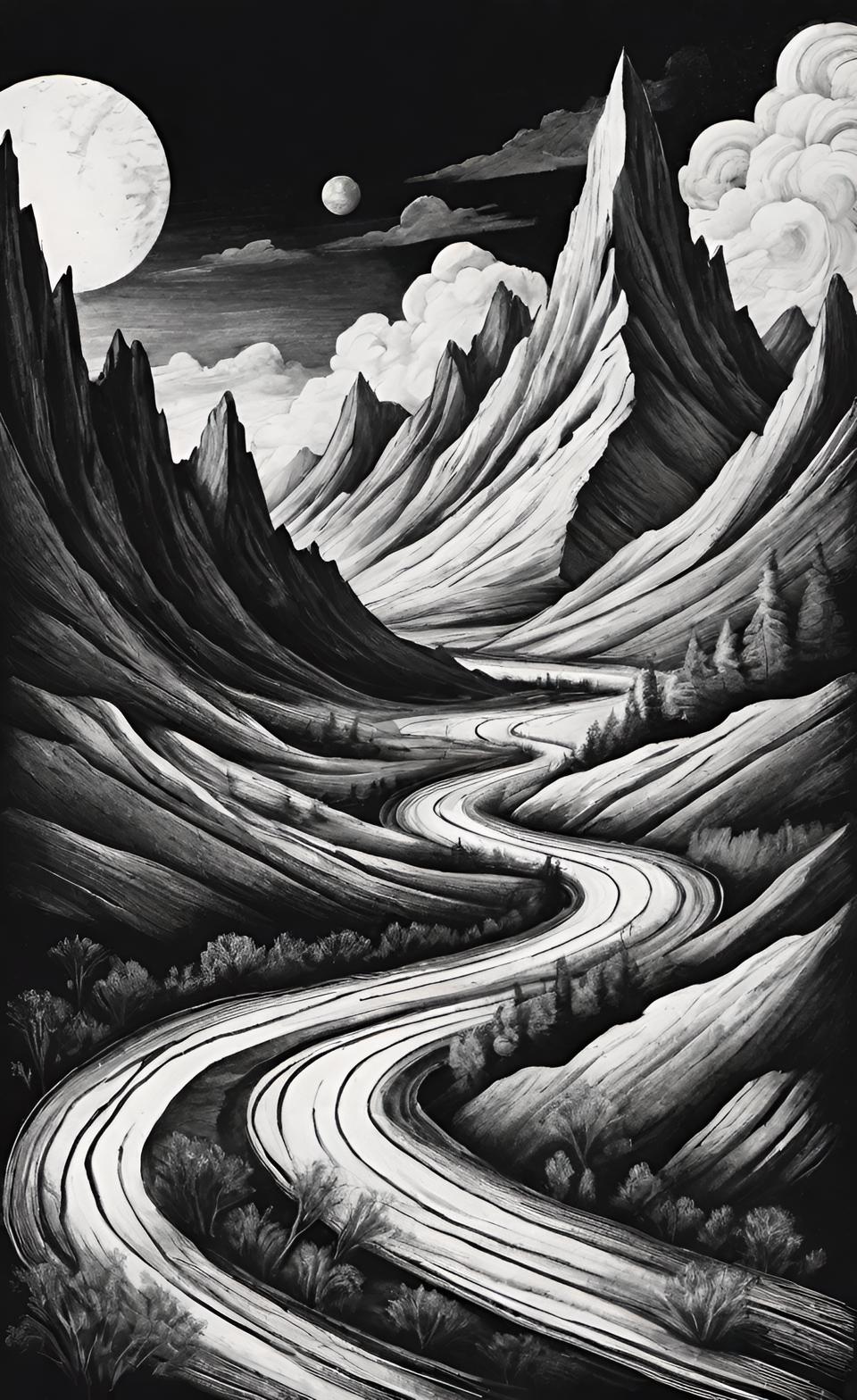- Air Homepage
- Alberta Air Quality
- Air Quality Dispersion Modelling
- Land Use and Land Cover
AERMOD and CALPUFF rely heavily on land use and land cover for air quality planning.
In air quality modelling systems like AERMOD, CALPUFF, and AERSCREEN, land use and land cover help simulate pollutant dispersion. Models like these need specific inputs like terrain, surface roughness, and albedo, which vary depending on land type (urban, rural, forest). These variables can be calculated with tools like AERSURFACE, so models are accurate.
Surface data shapes air quality models - Are you aware that the grass on your lawn and the concrete in your city actually change how pollutants spread in the air? Learn how surface roughness, albedo, and land cover data are essential for making precise and regulatory-compliant air quality predictions.
 Impact of land usage on the environment
Impact of land usage on the environmentAERMOD uses land-specific data to set surface parameters, whereas CALPUFF needs gridded land types. AERMOD uses land-specific data to set surface parameters, whereas CALPUFF needs gridded land types.
You can use land cover data manually or using government-provided sources like GeoBC or Open Government Canada. Translating and processing this data correctly makes sure air quality models produce accurate simulations, which are important for public health and environmental management.
These insights into land characteristics, especially urban heat effects and pollutant behavior, make these models indispensable for long-term impact studies. The right data helps air quality models make better, more informed decisions about pollution.
You might be interested in reading the text for these reasons:
- Learn how the usage of the land surface affects the air you breathe and your environment.
- Learn how accurate land data can impact air quality predictions and public health policies.
- How to use this knowledge to control pollution in your community.
- Adapt your models to seasonal changes in land use for long-term environmental planning.
British Columbia Air Quality Dispersion Modelling Step-by-Step
This passage explains how to use AERSCREEN, AERMOD, CALPUFF, and CALMET to model air quality in specific locations. Here's how it works:
- The data sources for AERSCREEN, AERMOD, and CALPUFF are land use and geophysical characteristics of the area being modelled. You can get it from government websites like GeoBC and Open Government of Canada, or manually from maps and images.
 Calculating surface roughness
Calculating surface roughness- Different software tools require different land use data formats. CALPUFF needs gridded land use types, while AERSCREEN and AERMOD can use GeoBC BTM.
- AERSCREEN and AERMOD need surface roughness, albedo, and Bowen ratio values, which vary by land use and land cover, season, and wind direction. You can figure out these parameters manually or with a tool like AERSURFACE.
- EPA's AERMOD implementation guides include instructions for determining surface parameters based on measured data or default values.
- Each modelling tool has its own set of instructions for specifying surface parameters. In AERMOD, users can define land use types for different wind sectors, but in CALMET, users need a GEO.DAT file.
- It's important to pick values based on seasonal conditions specific to the area you're modeling. There are tables with suggested values for different land uses and seasons.
- GeoBC BTM land use data needs to be translated into USGS land use codes and gridded to work with modeling software.
- Once the data has been prepared and processed, it's used to create input files for the modelling software, to ensure all parameters are specified correctly for accurate simulations.
Alberta Surface Roughness and Land Use Insights
The passage of winds across surface structures is affected by surface roughness and other properties of the surface. The following method should be used for AERMOD assessments.
Use the provided list of default surface characteristics (Surface Roughness Length, Albedo, Bowen Ratio) for various places in Alberta. The proponent must explain why a different value should be used and why the chose the values were used in the assessment.
 Shaping the air with surface features
Shaping the air with surface featuresThe USEPA creates realistic surface characteristics with AERSURFACE. In this tool, the American National Land Cover Database (NLCD) products created by the Multi-Resolution Land Characteristics Consortium are used.
AEPA recommends the following settings for Alberta based on AERSURFACE (U.S. EPA 2020) and 2015 Land Use Cover of Canada. Here's the order of preference:
- Meteorological data based on land use.
- If the proponent thinks they can develop more realistic surface characteristics using AERSURFACE as per the AERMOD Implementation Guide (U.S. EPA 2008), they can.
Land use and land cover should be classified within a 3-km radius of the source when using AERSURFACE or similar tools. Classify the space as urban if more than 50% of the land is industrial, commercial, or compact residential (two-story dwellings, small lawns). Other than forests, use the rural coefficients of surface roughness. Forests, however, should be treated like cities.
The modeller can also use the AER non-routine flaring tool to generate land use values for flare modelling.
Terrain data determines CALMET surface characteristics in CALPUFF modelling. In Appendix E, you'll find surface characteristics that should be mapped into CALMET.
Using land use and land cover information to model air quality dispersion
SK
For air dispersion modelling, it's important to represent land characteristics accurately. Surface characteristics like roughness, albedo, Bowen ratio, and anthropogenic heat flux influence how pollutants disperse.
 Seasonal shifts alter pollution spread in Canada
Seasonal shifts alter pollution spread in CanadaThis section of the Saskatchewan guideline explains how to determine these characteristics, including the procedure for using AERSURFACE for AERMOD and MMIF for CALMET. Additionally, it discusses how to classify areas as urban or rural and the urban heat island effect.
The guideline gives you specific calculations and default values for surface characteristics, along with how to use them.
In general, it emphasizes the need for detailed and accurate land use and land cover data in air quality assessments.
MB
To figure out how pollutants disperse in the air, we need to know if a source is in a urban or rural setting. Modellers categorize the land within 3 kilometers of the source using the Auer land use classification method.
Then they use urban dispersion coefficients if certain land types, like I1, I2, C1, R2, and R3, make up more than half of the area. Otherwise, it's best to use rural dispersion coefficients. Ask the provincial department if it's not clear whether it's urban or rural.
Calvin Consulting Group Ltd....
...specializes in air quality dispersion modelling assessments, helping you deal with complex regulations to get your approvals fast. Using cutting-edge air quality tools like AERMOD, AERFLARE, and CALPUFF, our team of meteorologists and modellers delivers precise, reliable results. Efficiently!
No matter what you're doing, we make sure to use the land characteristics data for your site's region accurately. That means you can focus on what matters most with while we handle the needed reports.
Get in touch with Barry at Calvin Consulting.

We'll take care of it for you.
Clean air is our Passion...Regulatory Compliance is our Business.
Models like AERMOD, AERSCREEN, and CALPUFF need to understand land use and cover.
Models use geophysical data, such as terrain and surface characteristics, to predict pollution movement. With tools like AERSURFACE, seasonal variations in roughness and albedo can be accounted for.
Models need tailored data formats, whether urban or rural, and surface parameters need to be carefully mapped. For environmental and public health decisions, accurate representation of these characteristics can lead to more reliable pollution models.
Do you have concerns about air pollution in your area??
Perhaps modelling air pollution will provide the answers to your question.
That is what I do on a full-time basis. Find out if it is necessary for your project.
Have your Say...
on the StuffintheAir facebook page
Other topics listed in these guides:
The Stuff-in-the-Air Site Map
And,
Thank you to my research and writing assistants, ChatGPT and WordTune, as well as Wombo and others for the images.
OpenAI's large-scale language generation model (and others provided by Google and Meta), helped generate this text. As soon as draft language is generated, the author reviews, edits, and revises it to their own liking and is responsible for the content.


New! Comments
Do you like what you see here? Please let us know in the box below.